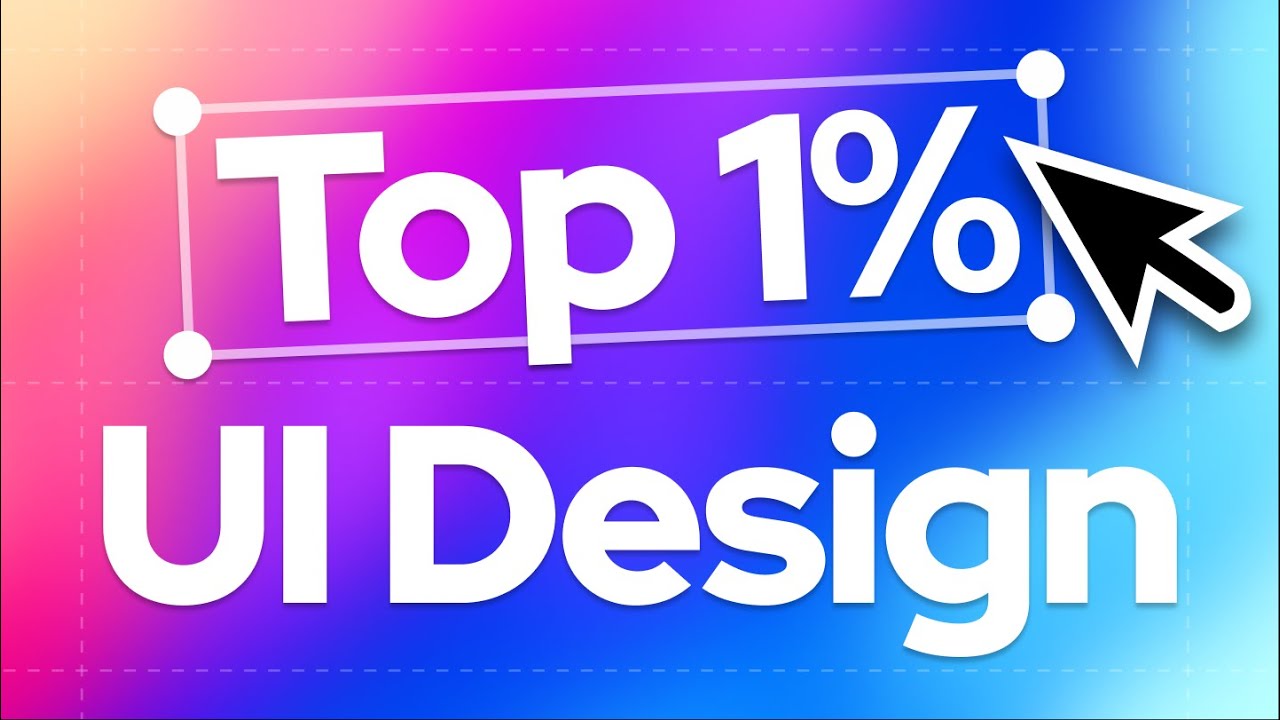What makes a great design? The 7 principles you need to know
Summary
TLDRThis video delves into the seven essential principles of design that elevate great creations, providing insight into what makes a design stand out. The principles include emphasis, balance and alignment, contrast, repetition, proportion, movement, and white space. Each principle is explored in detail, highlighting its role in creating organized, functional, and aesthetically pleasing designs. The video emphasizes the importance of understanding these principles while allowing room for creative flexibility. Whether you're designing for brand identity or user accessibility, mastering these principles helps craft designs that are both effective and memorable.
Takeaways
- 😀 Emphasis is crucial in design, determining what draws attention and holds focus, controlling the hierarchy of information.
- 😀 Balance and alignment give your design structure, helping to organize and connect elements effectively.
- 😀 Contrast helps elements stand out and improves clarity, which is essential for accessibility, communication, and navigation.
- 😀 Repetition builds brand identity by using consistent patterns, shapes, colors, and voices across designs.
- 😀 Proportion refers to the size and weight of elements, ensuring a cohesive and balanced look.
- 😀 Movement guides the viewer's eye across a design, creating a narrative flow and structure, often using color and shape.
- 😀 White space (negative space) plays a key role in enhancing balance, emphasis, and clarity by leaving areas empty.
- 😀 Good design follows principles but allows flexibility, with the option to bend or break the rules creatively once understood.
- 😀 Focus on what to highlight in your design and how to guide the viewer's attention through the content hierarchy.
- 😀 Avoid overloading the design by leaving room for breathing space, allowing the other elements to shine.
Q & A
What is the first principle of design discussed in the video?
-The first principle of design is emphasis. It focuses on what sticks out in a design, drawing the audience’s attention and holding it. Emphasis also involves controlling hierarchy so that not all elements are given equal importance.
Why is controlling emphasis important in design?
-Controlling emphasis is important because it helps to guide the audience's attention to the most important aspects of the design. It also controls the hierarchy of information, ensuring that the audience notices elements in the intended order.
What does balance and alignment refer to in design?
-Balance and alignment refer to how elements are spaced and arranged in a design to create structure, organization, and connection between them. These principles ensure that the design feels stable and visually cohesive.
How do different elements impact the balance in a design?
-Different elements have different visual weights. For example, a large circle in a primary color will carry more visual weight than a small dot in a pastel color. This difference affects how balanced the design feels overall.
What is contrast and why is it important?
-Contrast involves juxtaposing different elements in a design to make them stand out. It helps create clarity, which is essential for communication and navigation, especially for accessibility.
How does contrast contribute to accessibility?
-Contrast contributes to accessibility by enhancing clarity, making designs easier to read and navigate. It ensures that important elements stand out and can be easily distinguished from one another.
What role does repetition play in design?
-Repetition helps create consistency and reinforces brand identity. By repeating elements like shapes, colors, or themes, a design becomes more cohesive and memorable.
Can repetition be overused in design?
-While repetition is important for creating identity, it can be overused if it becomes monotonous or overly predictable. However, when applied thoughtfully, repetition enhances recognition and coherence.
What is proportion in design and how does it work?
-Proportion refers to the size and weight of elements in relation to each other. Elements with similar proportions create a cohesive and balanced look, while varying proportions can create emphasis and contrast.
What is the concept of 'movement' in design?
-Movement in design refers to how the viewer's eye travels across the layout. It provides a narrative arc or a logical flow, guiding the viewer from one point to another, often using color or shapes to direct the eye.
How does white space contribute to a design?
-White space, or negative space, is the empty area around elements in a design. It helps fine-tune balance and emphasis, ensuring the design doesn’t feel crowded. It also enhances the overall aesthetic by allowing elements to breathe and stand out more.
What should designers consider when using white space?
-Designers should consider what can be taken away rather than always adding more. White space can be a powerful tool to enhance the other principles of design, creating a more elegant and effective layout.
Outlines

Этот раздел доступен только подписчикам платных тарифов. Пожалуйста, перейдите на платный тариф для доступа.
Перейти на платный тарифMindmap

Этот раздел доступен только подписчикам платных тарифов. Пожалуйста, перейдите на платный тариф для доступа.
Перейти на платный тарифKeywords

Этот раздел доступен только подписчикам платных тарифов. Пожалуйста, перейдите на платный тариф для доступа.
Перейти на платный тарифHighlights

Этот раздел доступен только подписчикам платных тарифов. Пожалуйста, перейдите на платный тариф для доступа.
Перейти на платный тарифTranscripts

Этот раздел доступен только подписчикам платных тарифов. Пожалуйста, перейдите на платный тариф для доступа.
Перейти на платный тарифПосмотреть больше похожих видео
5.0 / 5 (0 votes)






